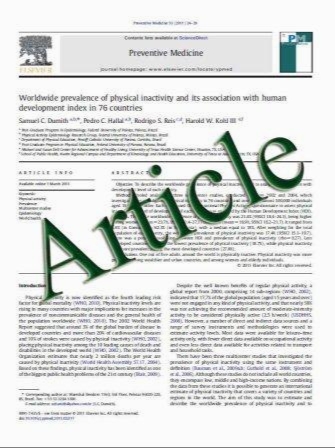Articular cartilage changes in experimental osteoarthritis in rabbits: MRI and morphological findings
- نوع فایل : کتاب
- زبان : انگلیسی
- مؤلف : Mohammad Hadi Bagheri & Seifollah Dehghani Nazhvani & Behrooz Nikahval & Sara Pakbaz & Nader Tanideh & Davood Mehrabani
- چاپ و سال / کشور: 2010
Description
The objective of the present study was to determine the magnetic resonance imaging (MRI) and gross pathological findings of articular cartilage in osteoarthritis experimentally induced in rabbit as an animal model. Ten adult Dutch male rabbits were randomly divided into two equal groups. In group one, in the left knee (stifle), the cranial (anterior) cruciate ligament (CCL) was sectioned [transected group (TG)], and in the second group, only arthrotomy was performed through the same approach, but the CCL was left intact [arthrotomy group (AG)]. In both groups, the right knees were considered as controls. Thirty days after operation, MRI was performed under general anesthesia, and then the animals were sacrificed for gross pathological study. MRI was performed by a 1.5-T scanner with a wrist coil to evaluate the coronal and sagittal gradient echo T2-weighted proton density and T1- and T2-weighted sequences. A magnification loupe was used to inspect the menisci, femoral and tibial cartilages, and synovium. The results revealed that the measured mean articular cartilage thickness by MRI was less in TG in comparison to AG and control groups (p< 0.05), whereas the difference between AG and control was not significant. Statistical analysis of the results revealed that the measured mean articular cartilage thickness by MRI was less in TG than those of AG and control groups, whereas the difference between AG and control was not significant. There were no significant differences in meniscal degeneration, joint effusion, and MRI overall grades between AG and the control groups. The difference was significant between TG with AG and the controls in relation to MRI findings. The gross examination revealed that there were no gross abnormalities in AG but there were also significant differences between the TG and AG, and between TG and the controls. Changes were localized primarily to the distal aspect of the medial femoral condylar cartilage. It was concluded that the MRI findings in early osteoarthritis process consisted of articular cartilage loss and meniscal degeneration. The quantitative alterations in articular cartilage thickness measured by MRI can be a noninvasive way to predict osteoarthritis. The MRI findings were also well correlated with the results of pathological study.
Comp Clin Pathol (2011) 20:25–31 DOI 10.1007/s00580-009-0951-3 Received: 28 June 2009 / Accepted: 16 December 2009 / Published online: 23 January 2010


